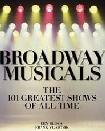SEARCH
REVIEWS
FEATURES
NEWS
Etcetera and
Short Term Listings
LISTINGS
Broadway
Off-Broadway
BOOKS and CDs
OTHER PLACES
Berkshires
London
LA/San Diego
Philadelphia
Elsewhere
QUOTES
On TKTS
LETTERS TO EDITOR
FILM
LINKS
MISCELLANEOUS
Free Updates
Masthead
Writing for us
A CurtainUp San Francisco Review
The Overcoat
The Overcoat is a play told entirely in movement and mimetic acting. No words . . . none at all. But somehow, as in an old Charlie Chaplin movie, you don't miss the talking; in fact, it's all the better, since the entire imaginative production is perfectly coordinated and choreographed to some of Dmitri Shostakovich's most melodic and powerful music.
And there is a story to it all -- a moving, meaningful Everyman tale adapted from one of the most famous short stories of all time, Nikolai Gogol's 19th century piece of the same name. According to co-creator and director Morris Panych: "I wanted to feel my way through the music and create a physical score . . . a story that could be followed."
Although this dazzling theatre piece is unlike anything else you're likely to have ever seen, it conjures up not only Chaplin but Beckett, Brecht and even Fellini. Panych and co-director/choreographer Wendy Gorling make brilliant use of silent film idiom, mixed with modern dance . . . Isadora Duncan comes to mind. The whole thing is a perfect example of postmodern pastiche -- the first time I've felt comfortable using that phrase since grad school.
One can easily get swept up in the magical combination of inventive direction and design and the masterful performances of the cast of 22 actors. A number of the performers have been with the show since its beginning in 1997 and the expertise that is manifest throughout is reminiscent of Cirque de Soleil at its best.
Peter Anderson, who heads the cast portraying the lead character, The Man, studied mime years ago in San Francisco. Anderson's gangly, frazzled sympathetic Man, weaves his frantic way from his dingy little room onto the trolley, to his factory-like drafting room office shared with younger, brighter, meaner co-workers who delight in teasing the poor fellow. Though Man dominates the action, he is surrounded by a number of dynamic, skillful performers in a variety of easily identifiable roles.
The West Coast premiere of CanStage's (Canadian Stage Company) award winning production is presented on a grand scale by set designer Ken MacDonald, Panych's longtime partner, with a two-story structure of sliding, multi-paneled windows, a wrought-iron staircase on wheels and a giant machine right out of Charlie Chaplin's Modern Times. Nancy Bryant's costumes are notable-from the workers business suits to the Boss's elegant fur-colored coat, the streetwalkers dresses and finally The Man's exquisite purple overcoat --another in an array of elements that contribute to an operatic quality.
Adding to the heady mixture of theatrical effects is Alan Brodie's starkly dramatic lighting which has actors seen murkily in shadows through translucent panels, with an occasional spotlight on our sad-sack hero around whom all this inventiveness revolves -- a lowly, lonely draftsman in an architectural firm who does his job, tries to patch his ragged coat and fend off the unwelcome advances of his equally lonely landlady (a sensuous Tracey Ferencz). We watch Man lost in the crush of commuters, teased unmercifully by his younger co-workers, derided by the boss' sexy secretary (attractively played by Cyndi Mason), too overwhelmed by his miserable life to notice the shy attentions from the New Girl (Judi Closkey).
Everything is precisely coordinated between movement and music-some blaring march-like passages, lovely decidedly Fellini-esque sad violins and a lonely trumpet echo across the stage, which has by now become a world unto itself. There's a nicely choreographed moment of victory when the head architect acknowledges The Man's design, to the envy of the other ambitious draftsmen. But then everything changes when Man, encouraged by that instant of recognition at work, finally invests his hard-earned savings in a new overcoat. A series of marvelous scenes follow involving an officious master tailor (Mark Christmann), solicitous assistants flinging about bolts of fabric, a hilariously bullied customer (Derek Scott), and a Brechtian sweatshop.
The tailor and sweatshop scenes, with a covey of muscular men pumping the sewing pedals in an imaginative somehow sexy scene, are worthy of a ballet. Anderson's delightful waltz with his new coat is a tenderly comic highlight, as is his blissful little dance reflecting his coworkers' awe at his magnificent coat.
As in traditional Japanese theatre the action is augmented by graceful stagehands, clad here in white hospital gowns, like inmates in a sanitarium-a telescoping hint at the poignant ending. They roll out the scenery, loll on the beds, and supply props when needed. Panych and Gorling include them in the story in a manner that teases the audience and ultimately heightens the play's conclusion.
Though things occasionally get a bit confusing, Anderson holds it all together: Every facet is embodied with the same apt direction, humanization and beautifully realized movement flowing directly from the Shostakovich score. The creators deny it is dance, but it's so graceful and fluid it doesn't matter what they call it. It's a unique, magical tragi-comic play on life.
|
The Overcoat Adapted from the short story by Nikolai Gogol Created & Directed by Morris Panych and Wendy Gorling Scenic Designer: Ken MacDonald Lighting Designer: Alan Brodie Costume Design: Nancy Bryant Cast: Peter Anderson (The Man); Victoria Adilman (Whore); Manon Beaudoin (Landlady's Old Mom); Matt Bois (Inmate); Mark Christmann (Tailor); Judy Closkey (New Girl); Diana Coatsworth (Boss' Wife); Monica Dottor (Whore); Tracey Ferencz (Landlady);Peter Grier (Architect); Colin Heath (Office Manager); Ryan Holliman (Architect);Mattew Hunt (Sweatshop Worker); Darren Hynes (Sweatshop Worker); Cyndi Mason (Boss' Secretary); Allan Morgan (Head of Firm); Graham Percy (Architect); Avi Phillips (Inmate); Derek Scott (Fabric Customer); Sal Scozzari (Sweatshop Foreman); Courtnay Stevens (Architect); Brahm Taylor (Inmate) Running time: One hour, 40 minutes with one 15 minute Intermission Dates: August 31 through Sept. 25 CanStage at American Conservatory Theater Geary Theater, 415 Geary St., San Francisco, (415) 749-2228, visit www.act-sf.org Tickets $25-$80. Reviewed August 3, 2005 by Phyllis Butler |

Easy-on-the budget super gift for yourself and your musical loving friends. Tons of gorgeous pictures.

Retold by Tina Packer of Shakespeare & Co.
Click image to buy.
Our Review

At This Theater

Leonard Maltin's 2005 Movie Guide

Ridiculous!The Theatrical Life & Times of Charles Ludlam

6, 500 Comparative Phrases including 800 Shakespearean Metaphors by CurtainUp's editor.
Click image to buy.
Go here for details and larger image.



